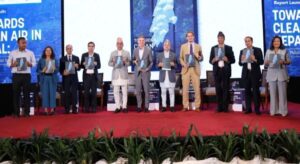 Air pollution is identified as Nepal’s leading health risk, responsible for approximately 26,000 premature deaths annually and reducing average life expectancy by 3.4 years, with hotspots in the Kathmandu Valley and Terai region showing no significant improvement over the past decade. The economic cost exceeds 6% of Nepal’s GDP due to impacts on health, labor productivity, tourism, and aviation, necessitating a multi-sector approach that includes vehicle electrification, industrial emission controls, adoption of electric cookstoves to replace biomass burning, forest fire prevention, and transboundary cooperation with neighboring countries to address the shared airshed of the Indo-Gangetic Plain and Himalayan Foothills. The World Bank emphasizes that bold, coordinated policies and investments are critical, as the cost of inaction outweighs mitigation expenses.
Air pollution is identified as Nepal’s leading health risk, responsible for approximately 26,000 premature deaths annually and reducing average life expectancy by 3.4 years, with hotspots in the Kathmandu Valley and Terai region showing no significant improvement over the past decade. The economic cost exceeds 6% of Nepal’s GDP due to impacts on health, labor productivity, tourism, and aviation, necessitating a multi-sector approach that includes vehicle electrification, industrial emission controls, adoption of electric cookstoves to replace biomass burning, forest fire prevention, and transboundary cooperation with neighboring countries to address the shared airshed of the Indo-Gangetic Plain and Himalayan Foothills. The World Bank emphasizes that bold, coordinated policies and investments are critical, as the cost of inaction outweighs mitigation expenses.
Source: World Bank
